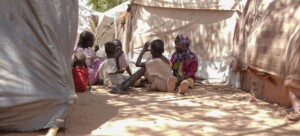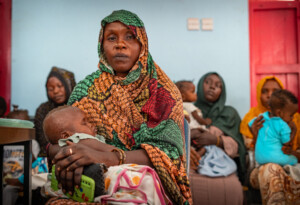Haemorrhagic fevers on the rise in Darfur, Northern State
Sudan is witnessing an increase in haemorrhagic fever in various parts of the country, mainly North Darfur and the Northern State. The North Darfur Ministry of Health reported four new cases of dengue fever in El Fasher locality on Monday. The cases were confirmed by the National Laboratory in Khartoum after testing 19 samples of suspected cases.
 Aedes aegypti, the mosquito responsible for the spread of hemorrhagic fever (vectorbase.org)
Aedes aegypti, the mosquito responsible for the spread of hemorrhagic fever (vectorbase.org)
Sudan is witnessing an increase in haemorrhagic fevers* in various parts of the country, mainly North Darfur and the Northern State. The North Darfur Ministry of Health reported four new cases of dengue fever in El Fasher locality on Monday. The cases were confirmed by the National Laboratory in Khartoum after testing 19 samples of suspected cases.
Dengue fever is one of the haemorrhagic fevers transmitted by the Aedes aegypti mosquito, and is known in the area as Tagwa Bereima, Director of the Emergency and Epidemiology Department at the Ministry of Health in North Darfur, explains.
She reported that, out of the 15 recently recorded cases of dengue fever in the state, five were found in El Fasher, three in Mellit locality, four in El Kuma locality, two in Um Keddada locality, and two in Saraf Omra locality.
The minister also reported a high incidence of malaria infections (11,493 cases) in the localities of El Fasher, El Kuma, Um Keddada, Dar El Salam, and Tawila this week due to the increased intensity of mosquito breeding this year after extremely heavy rainfall during the rainy season this year.
The rise in mosquito-borne diseases after the unusually heavy rainy season was also reflected in the increase in chikungunya cases, which caused the government to declare a State of Health Emergency last month in West Darfur.
Hamda Mohamed, Director of Animal Resources in El Borgeig locality, told Radio Dabanga on Monday that 10 new suspected cases of haemorrhagic fever were recorded in the Northern State. This brings the total number of suspected cases in El Borgeig to 86, including 21 deaths.
Mohamed also indicated that the results of the tests that were sent to the Soba laboratory in Khartoum have not yet been announced.
Last week, Radio Dabanga also reported on the increase in Rift Valley fever and haemorrhagic fever in the Northern State.
The increase in fevers comes at a time when Sudan is plagued by a second wave of COVID-19 infections and food shortages.
* Haemorrhagic fevers are severe acute viral infections, usually with a sudden onset of fever, malaise, headache, and myalgia followed by pharyngitis, vomiting, diarrhoea, skin rash, and haemorrhagic manifestations. The outcome is fatal in more than 50 per cent of the cases, the World Health Organisation reports. Among the fevers recently recorded in Sudan are dengue fever and Rift Valley fever (RVF). Viruses that cause dengue fever are transmitted by mosquitoes. RVF can be acquired either by a mosquito bite or by direct contact with blood or tissues of infected animals (mainly sheep), including consumption of unpasteurised milk.
Radio Dabanga’s editorial independence means that we can continue to provide factual updates about political developments to Sudanese and international actors, educate people about how to avoid outbreaks of infectious diseases, and provide a window to the world for those in all corners of Sudan. Support Radio Dabanga for as little as €2.50, the equivalent of a cup of coffee.












 and then
and then